Romanian police clash with anti-government protesters
- Published

Tens of thousands of Romanians, including returning expats, have joined the protests
Police have clashed with tens of thousands of anti-government protesters across Romania.
Between 30,000 and 50,000 people, including many returning expats, turned out nationwide, media reports say.
Some protesters in the capital Bucharest threw bottles and paving slabs, while police used tear gas, pepper spray and even a water cannon.
Around 100 protesters needed medical attention and 10 police were injured, emergency services said.
A group of protesters tried to break into the government building in Bucharest, but were held back by the police security cordon.
Others waved EU and Romanian flags, banged drums and chanted slogans.
The protesters demand the resignation of the government, objecting to the perceived efforts to weaken the judiciary by the governing Social Democrats (PSD), as well as low wages and entrenched corruption in the country.
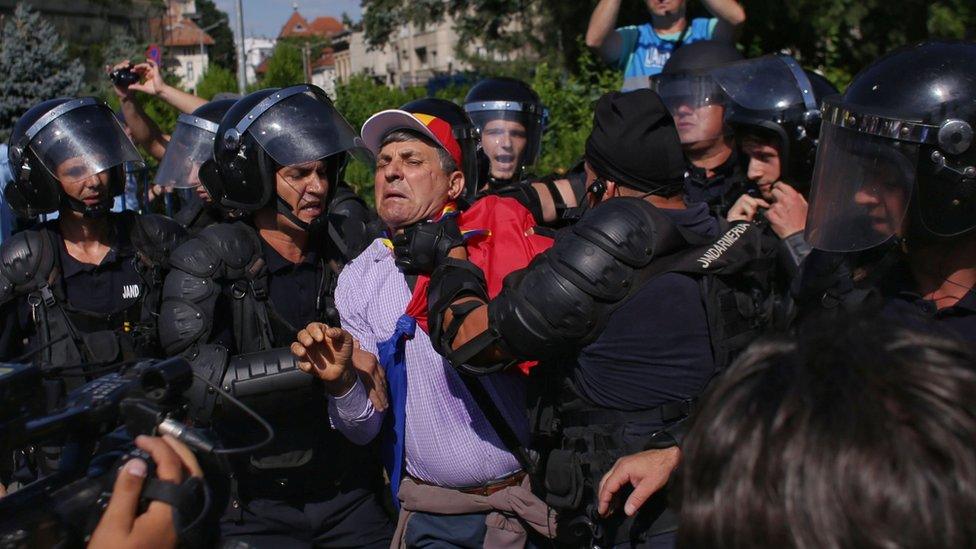
Police clashed with protesters across the country
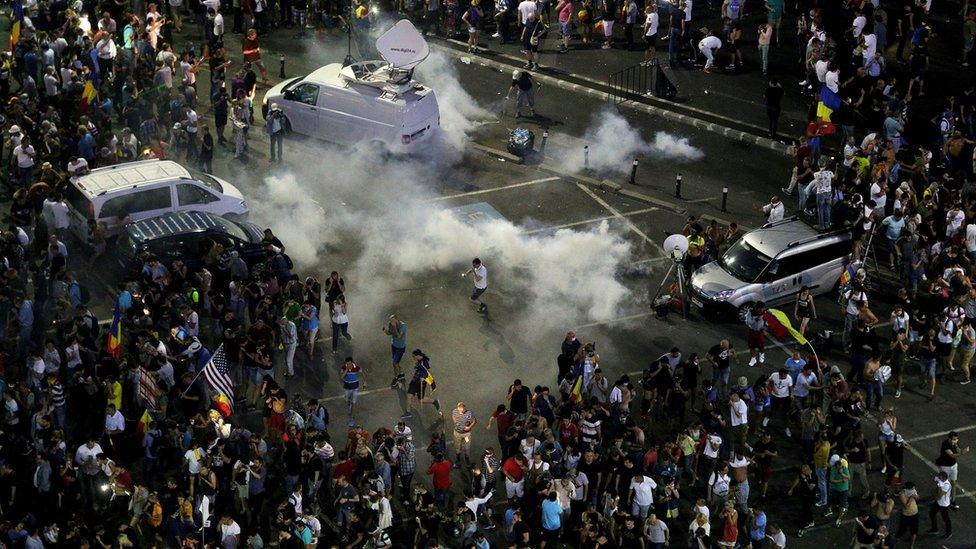
Authorities used tear gas, pepper spray and water cannon to try to quell the demonstrations
Protests have been building against the PSD for months.
In July, President Klaus Iohannis approved the dismissal of anti-corruption prosecutor Laura Codruta Kovesi, who had been leading investigations into local and national politicians for graft. President Iohannis had been under extensive pressure from the PSD government to agree to her removal.
Around 150,000 gathered in Bucharest last year after the government passed a decree that could free those jailed on corruption charges.
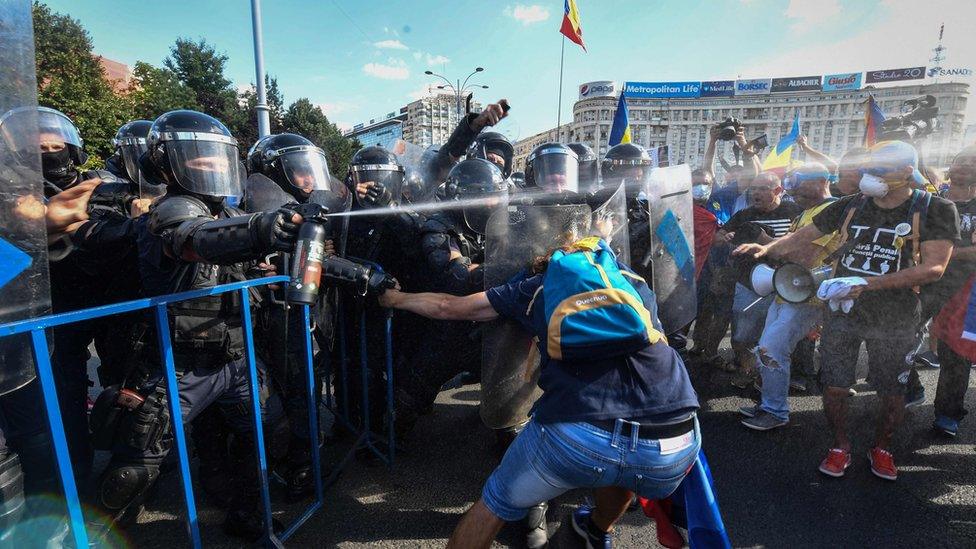
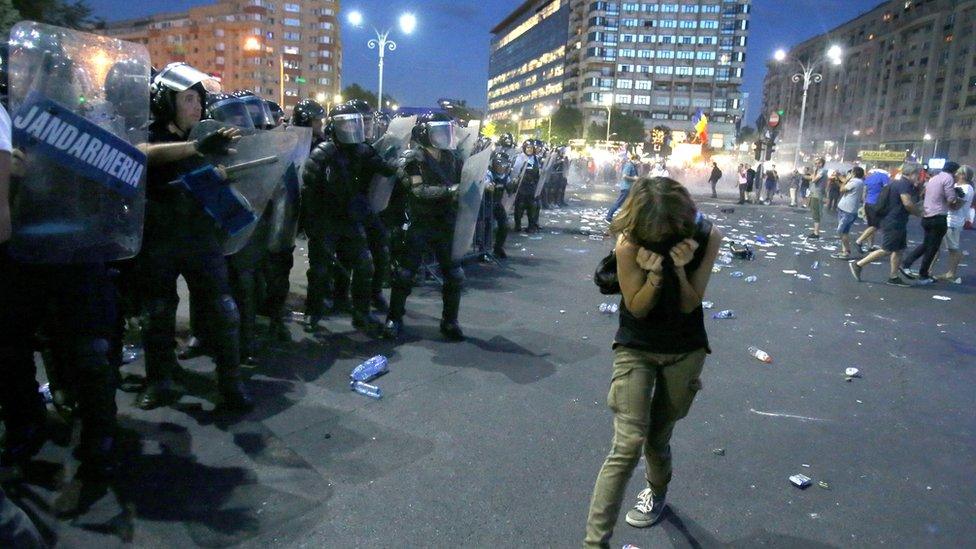
Many expat Romanians also returned to take part.
Ileana Anghel travelled all the way from her home in Spain with her husband to take part.
"We want to see modern roads and schools and above all to not have to pay bribes to the left and right," she told AFP.
Sixty-year-old Vlad flew back to Romania from New York, his home of 30 years.
"Corruption and embezzlement, which profit the ruling class, are what bothers me," Vlad told the same news agency.
According to the World Bank, up to a quarter of the Romanian population - between three and five million people - live and work abroad, sending back around $5bn (£3.9bn) to one of the EU's least developed countries.
- Published2 February 2017
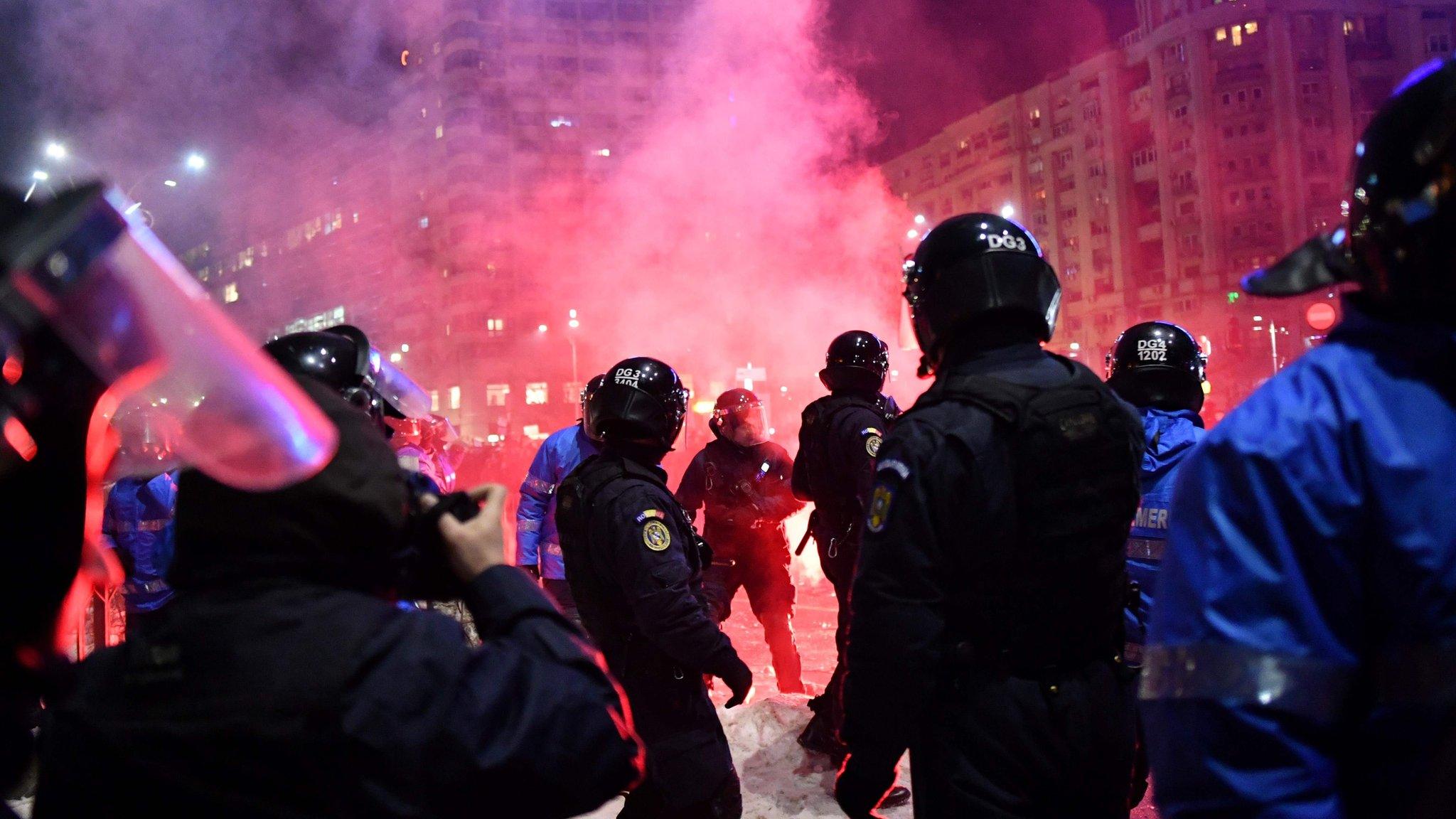
- Published19 February 2015
